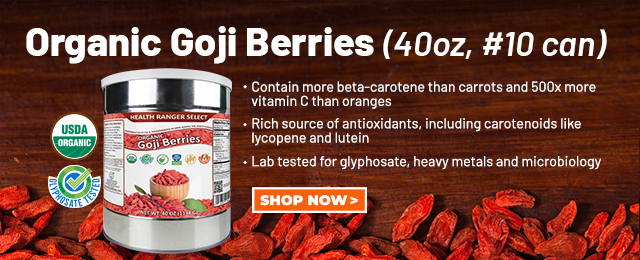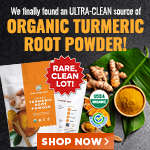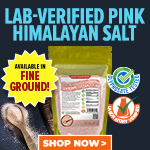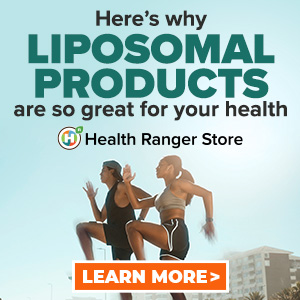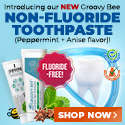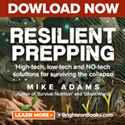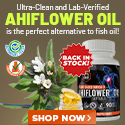
Environmental toxins are in water, food and garden: Dirty Dozen list from the EPA and how you can reduce exposure
Wednesday, May 22, 2013 by: Talya Dagan
Tags: environmental toxins, chemicals, dirty dozen
- European Court of Justice: Healthcare professionals who promoted or administered COVID-19 vaccines are CRIMINALLY LIABLE for any harm caused
- “Old Man in a Chair”: The COVID-19 pandemic was a carefully orchestrated scheme for global control
- Cinnamon plays a critical role in diabetes management
- FRAUD ALERT: Details DEMOCRATS do NOT want you to know about the $40 BILLION wasted on Fed-loaded credit cards cancelled by DOGE
- Scientists unveil breakthrough method to eliminate "Forever Chemicals" from water, transforming waste into graphene
- Newly released JFK files reveal Pentagon's role in creating Lyme disease and covid in the same lab
- Postcard from 1875 highlights smallpox vaccine’s failure: Lessons for today’s COVID-19 response
- Massive egg substitution recall: Bleach contamination sparks nationwide concern
- DOGE finds evidence of Social Security fraud and illegal immigrant voter registration
- AI-powered forecasting model proves more accurate than traditional systems at predicting the weather
- Oncologist warns of ‘terrifyingly aggressive’ cancers in children, linked to immune suppression from COVID vaccines
- Preparing for the unthinkable with William Brocius’ “How to Survive the Death of the Dollar”
- Zelensky defies Trump, rejects U.S. aid repayment and mineral deal amid rising tensions
- World Health Organization in crisis, prepares for DOWNSIZING after U.S. withdrawal and funding problems
- Trump administration deploys spy satellites to enhance southern border surveillance
- Science proves PASSION FRUIT is a powerful medicine for the GUT and the HEART
- Pentagon memo suggests U.S. will not defend Europe from Russian aggression, prioritizing China and homeland security
- When antibiotics are unavailable, natural ANTIMICROBIAL compounds become essential first line defenses against infection
- Newly released JFK files reveal Pentagon's role in creating Lyme disease and covid in the same lab
- Kiss Your Genetic Privacy Good-Bye! 23andMe Gets Green Light to Sell Your Intimate Genetic Details to Anyone They Want
- Oncologist warns of ‘terrifyingly aggressive’ cancers in children, linked to immune suppression from COVID vaccines
- Analysis: The coming economic collapse, a mass uprising and Trump's three secret weapons to halt the growing revolt
- European Court of Justice: Healthcare professionals who promoted or administered COVID-19 vaccines are CRIMINALLY LIABLE for any harm caused
- Dr. Suzanne Humphries makes bombshell appearance on Joe Rogan podcast, exposing vaccine industry deception back to POLIOMYELITIS
- Woman contracts WORLD'S DEADLIEST VIRUS after unknowingly being given the WRONG VACCINE
- NIH study, buried for decades, reveals that Flu Shots INCREASE elderly deaths, not prevent them
- Sugar-free deception: Artificial sweeteners hijack hunger signals, fuel obesity epidemic, study warns
- CDC finally halts $11 billion COVID funding scam as health officials admit the ‘pandemic’ was a fraud
- AI weather model outperforms traditional forecasts, boosts accuracy by 20%
- Black cumin seed oil emerges as a powerful ally against breast cancer and chronic inflammation
- Musk targets “strangely wealthy” lawmakers in DOGE probe, names Pelosi, McConnell, Schumer
- COVID-19 scandal linked to CANCER SURGE: Billionaire researcher sounds alarm
- “Independent” anti-Russia outlet MEDUZA faces COLLAPSE as US funding dries up
- The Health Ranger releases “Vaccine Zombie” song and music video, using AI-animated zombies for the music video
- DARPA: The shadowy innovator behind the world’s most advanced military technologies
- Britain’s descent into police state censorship: Parents raided for questioning their daughter’s school system online
- Newly released JFK files reveal Pentagon's role in creating Lyme disease and covid in the same lab
- California's social media censorship law struck down: A victory for free speech or a threat to online safety?
- EPA advisor admits the agency is funneling billions to climate groups ahead of Trump’s return to White House
- The Health Ranger releases “Vaccine Zombie” song and music video, using AI-animated zombies for the music video
- Dr. Mike Yeadon releases 15-minute testimony - WATCH - about genocidal intent of COVID “vaccines”
- Florida takes a stand: DeSantis proposes permanent ban on mRNA vaccine mandates
- Mike Adams releases country western hit single: Goin’ Back in Time is Comin’ Home
- Rep. Nancy Mace introduces bill to ban biological males from female facilities on federal property
- Unpacking the Lies That We’ve Been Fed – new song and music video released by Mike Adams, the Health Ranger
- “Why we influenced the 2020 elections”: Facebook files reveal the coordinated effort to bury the Hunter Biden laptop story
- House Intelligence Committee calls for the ARREST and PROSECUTION of Dr. Anthony Fauci
- Sugarcane extract superior to cholesterol-lowering drugs?
- The pandemic as a tool for INDOCTRINATION: Understanding “The Indoctrinated Brain” by Dr. Michael Nehls
- Survival 101: Effective EMF blocking techniques
- Mike Adams releases music poetry sensation: A Child of God
- Peter Rost exposes Big Pharma corruption in his book “The Whistleblower: Confessions of a Healthcare Hitman”
- Migrants are taking advantage of recent hurricanes to scam residents and loot their homes
- Michigan sheriff announces criminal investigation into 2020 election crimes, Dominion Voting Systems
- Red Cross issues warning to stop blood plasma donations from vaccinated people
- Scientists confirm: GENIUS brain function can be spontaneously unleashed in humans without any apparent cause
- EPA advisor admits the agency is funneling billions to climate groups ahead of Trump’s return to White House
- HYSSOP: What research reveals about the health benefits of this ancient holy herb
- Two containers with completed ballots fall out of truck in Florida
- Fully vaccinated about to see “tsunami” of illness and death, warns virologist
- Global leaders unite to clamp down on “misinformation” with UN-backed Cascais Declaration
- BREAKING: 2025 NDAA authorizes mandatory military draft of WOMEN across America… as Pentagon pursues global NUCLEAR war with both Russia and China at the same time
- Michael Yon warns of a ZIONIST TAKEOVER in Trump’s second administration
- Ozempic and Wegovy weight loss drugs are injectable LIZARD VENOM PEPTIDES that may unleash a devastating wave of organ failure… side effects align with symptoms of SNAKE BITES
- BOMBSHELL: DNA testing kits are a SCAM to develop ethnic-specific bioweapons
- Israeli soldiers accused of even more torture and abuse in the West Bank
- These 13 countries just signed an agreement to engineer a global FAMINE by destroying food supply
- NASA admits that climate change occurs because of changes in Earth’s solar orbit, and NOT because of SUVs and fossil fuels
- Newly released JFK files reveal Pentagon's role in creating Lyme disease and covid in the same lab
- RFK Jr. clears key hurdle: Sen. Susan Collins backs controversial HHS nominee, signaling a new era for health policy
- Sermon 30: How Jesus reveals Caesar’s FAKE CURRENCY and FALSE AUTHORITY
- Coriander seeds: Ancient medicine backed by modern science
These environmental toxins wreck havoc with your health. POPs have been linked to obesity, cancer, thyroid problems, hormone issues, autism, attention deficit and hyperactivity in children, as well as other mental illness including violent behavior. Heart disease and diabetes risk is increased with exposure to these chemicals. Children are most at risk from exposure to environmental toxins.
Over 60 percent of the population was tested to have 20 of the pollutants in their blood. In Canada, 46 pollutants were found in every blood test administered. Cadmium has been found in 70 percent of American women over the age of 50, which increased their risk for myocardial infarction by 80 percent, osteoporosis by 40 percent and could be the cause of one fifth of the osteoporosis for that age group. Arsenic, found in drinking water, more than doubles one's risk of getting diabetes
Definition of a POP
"Organic compounds that are resistant to environmental degradation through chemical, biological, and photolytic processes."The United States EPA's Dirty Dozen list includes:
•Aldrin - an insecticide used on corn, cotton and for termite control•Chlordane - an insecticide used on sugar cane, sugar beets, termites, home lawns and garden pests
•DDT - insecticide used for agriculture especially cotton and to control malaria and typhus
•Endrin - insecticide used to control rodents and on cotton and grains
•Mirex - fire retardant for plastic, rubber and electrical products and an insecticide used to control fire ants, termites.
•Heptacholor - insecticide against termites and to combat malaria
•Hexacholorbenzene - fungicide used to treat seeds, used to make fireworks, synthetic rubber
•PCBs - used in industry for electrical transformers, paint additives, carbonless copy paper and plastics
•Toxophene - insecticide used to kill unwanted fish in lakes and treat crops
•Dioxins and furans - formed during combustion in burning of waste and backyard trash
Why are these chemicals so hard to get rid of?
What makes these chemicals so difficult to deal with is the chemical characteristics that they have in common. These toxic chemicals are not very soluble in water. They can pass through the body's fat tissues and are therefore stored in fat tissue. The POPs are usually chemicals that are halogenated with the chemical chlorine. The chlorine indicates that the pollutant is not resistant to degradation, or breaking down.While the United States has joined in numerous international agreements to help control, limit or ban many of these substances worldwide, more care is needed. In addition, individuals need to be informed and take action, as well as governmental agencies.
What to do to combat exposure to toxic chemicals and POPs
The first step to preventing absorption of toxins is to avoid exposure. Eating food grown without pesticides is the first step. Use care in purchasing household products for the garden and for house cleaning. Also read labels on any products that go on your skin.Nutrients like vitamin C and alpha lipoic acid can help booster the liver, along with herbal remedies such as silymarin and turmeric. Staying hydrated with clean drinking water will help flush toxins from your blood and your liver as well.
Further information at: http://talyadagan.com/
Sources for this article include:
http://www.nhiondemand.com/expertsperspectives/article.aspx?id=150
http://www.epa.gov/international/toxics/pop.html
http://chm.pops.int
http://toxtown.nlm.nih.gov/text_version/chemicals.php?id=86
About the author:
Talya Dagan is a health advocate and health coach, trained in nutrition and gourmet health food cuisine, writing about natural remedies for disease and nutrition and herbal medicine. You can follow her blog at www.talyadagan.com
Environmental toxins at FETCH.news
Get independent news alerts on natural cures, food lab tests, cannabis medicine, science, robotics, drones, privacy and more.
Take Action: Support Natural News by linking to this article from your website
Permalink to this article:
Embed article link: (copy HTML code below):
Reprinting this article:
Non-commercial use OK, cite NaturalNews.com with clickable link.
Follow Natural News on Facebook, Twitter, Google Plus, and Pinterest
Science News & Studies
Medicine News and Information
Food News & Studies
Health News & Studies
Herbs News & Information
Pollution News & Studies
Cancer News & Studies
Climate News & Studies
Survival News & Information
Gear News & Information
News covering technology, stocks, hackers, and more



"Big Tech and mainstream media are constantly trying to silence the independent voices that dare to bring you the truth about toxic food ingredients, dangerous medications and the failed, fraudulent science of the profit-driven medical establishment.
Email is one of the best ways to make sure you stay informed, without the censorship of the tech giants (Google, Apple, Facebook, Twitter, YouTube, etc.). Stay informed and you'll even likely learn information that may help save your own life."
–The Health Ranger, Mike Adams











